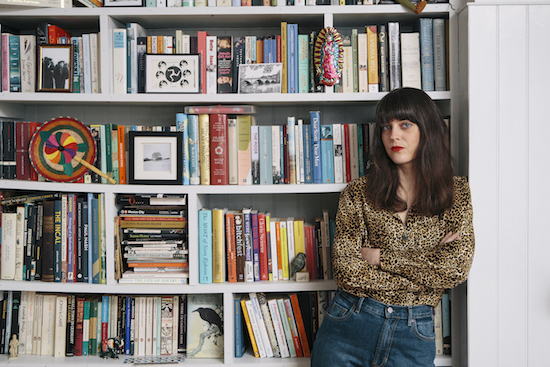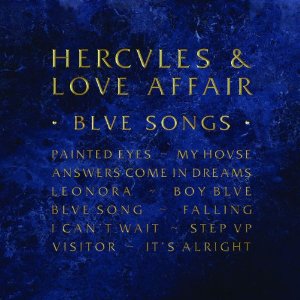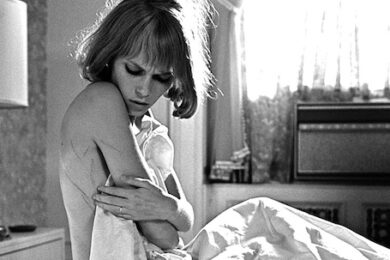Kat Lister
When I was a child I would often fall asleep to the sound of metal typebars hammering on paper. The clack clack clack of words in motion. A cacophony of heavy blows and jabs that ricocheted from wall to wall like linguistic bullets; scudding and darting, banging and crashing in the room next door to mine. Space was scarce in the small terrace house where my family and I lived in the late 1980s. Consequently, my father’s writing bureau was lodged in the only quiet nook he could find: the postage stamp-sized workstation was sandwiched tightly between the far corner of my parents’ bedroom and the wooden frame of their bed.
Night after night, my father’s thoughts marched and danced to the will of his fingertips. Syncopated rhythms were summoned using the resistive keys of his moss-green Olivetti and released high into the air. Vibrations carried through the brickwork, trembling the plasterwork between us as I lay on my mattress, awaiting sleep. The machine-gun rat-a-tat-tat soothed me underneath my duvet. When I closed my eyes, his assertive drummings pitter-pattered over me like rain against a window pane. It may sound strange, contradictory even, but when I recall the sound of my father’s typewriter it isn’t a disruptive clatter that I hear, but a reassuring kind of music. The kind of music that can only emerge from a state of complete immersion. An attentiveness that was, I hazard to guess, fuelled by an awareness of how precious time and space is when you don’t have much of either, and you’re longing to create.
Several decades after my father got rid of his Olivetti, I began searching for it again. My decision to buy a typewriter of my own, a few months ago, came at a time when I was increasingly questioning not only the shape of my words, but the strength of them; the weight of them; the value of the things I wanted to say. On the day that I Googled "Olivettis for sale", I had written a tweet, posted it, and deleted it ten minutes later. I was doing this more often – "this" being self-erasure – and I was convinced that others could see it happening in real time. After nearly a year living alone in lockdown with very little tangible contact, doubt was starting to creep in around the kitchen table where I typed. Hesitation set in, too. Hesitation in voicing my thoughts, hesitation in sharing them. "What are you trying to say?" and "Why are you the person to say it?" were questions that boomeranged as I hovered over my keyboard, refreshing my browser. The delete key was used more and more frequently.
I had just finished writing my first book: a memoir exploring grief and widowhood after the death of my husband in 2018, an accomplishment that should have bolstered me a little. But the writing of something so permanent – 70,000 words destined to be ink on a page – only seemed to have underscored my digital anxiety. Which is, at its heart, an uneasiness with the dueling impermanence and omnipresence of the internet – and, in particular, social media. The way that it creeps and seeps into your day, hour by hour, minute by minute, until you’re up to your neck in chatter and debate, slopping around in a sea of voices, none of which are your own. This is a different kind of noise altogether from the hammering of my father’s typewriter, and it isn’t always constructive. At least, it hasn’t felt constructive to me since I completed my book, and was flung back into a fast-moving journalistic world where everyone has something to say. A world where a 280-character tweet often feels like an arbitrary shout from the middle of a noisy construction site, where you’re struggling to hear yourself think.
It is interesting to me that the first typewriters were created for blind people, as if by using one of these rattling contraptions, a person’s sight might be partially restored. Although the concept of a writing machine can be dated back to the early 18th century in England, the first definitive typewriter that we know of arrived over a century later, in Italy, in around 1808. "Inventor of the typewriter" is an accolade we can bestow upon Pellegrino Turri not because we know much about the machine itself, but because we’ve been left with the letters that it typed, like trace fossils on carbon paper.
Turri invented the machine for his blind friend, Countess Carolina Fantoni da Fivizzano, who typed letters we can still read today. "It’s proof that it worked," Professor Richard Polt tells me from his study in Cincinnati, Ohio. Type "history" and "typewriter" – like I did a few weeks ago – into Google, and the first name that pops up is Polt’s. A professor of philosophy at Xavier University, he is also what you would call a typewriter enthusiast, a vague term for an expert who, when he isn’t teaching philosophy classes and writing books about the German existentialist Martin Heidegger, edits his own website called The Classic Typewriter Page. He even published a book, The Typewriter Revolution: A Typist’s Companion For The 21st Century, in 2015.
On the day of our Zoom call, I asked Polt to give me a guided webcam tour of his home office: not an inconspicuous desk rammed into the corner of a bedroom, like my father’s, but a room of his own, crammed full of books and typewriters. "Around 80," he answers when asked how many there are. Black ones, turquoise ones, a hefty German one called a Voss. A nickel-plated LC Smith that was sold in Mexico. A pop of red on the floor and a splash of sky blue on a nearby table. Some are his, some are waiting for others. Polt does repair work to raise funds for a local organisation, he explains, as he swivels his laptop around to show me his prized possession, his very first typewriter. His father bought him this 1937 noiseless Remington when he was 12 years old.
Looking around this cabinet of curiosities isn’t so different from journeying through the anarchic history of the typewriter in all its shapeshifting forms. It’s a chaotic timeline of outlines and colours and sizes, from studded golf balls and…






